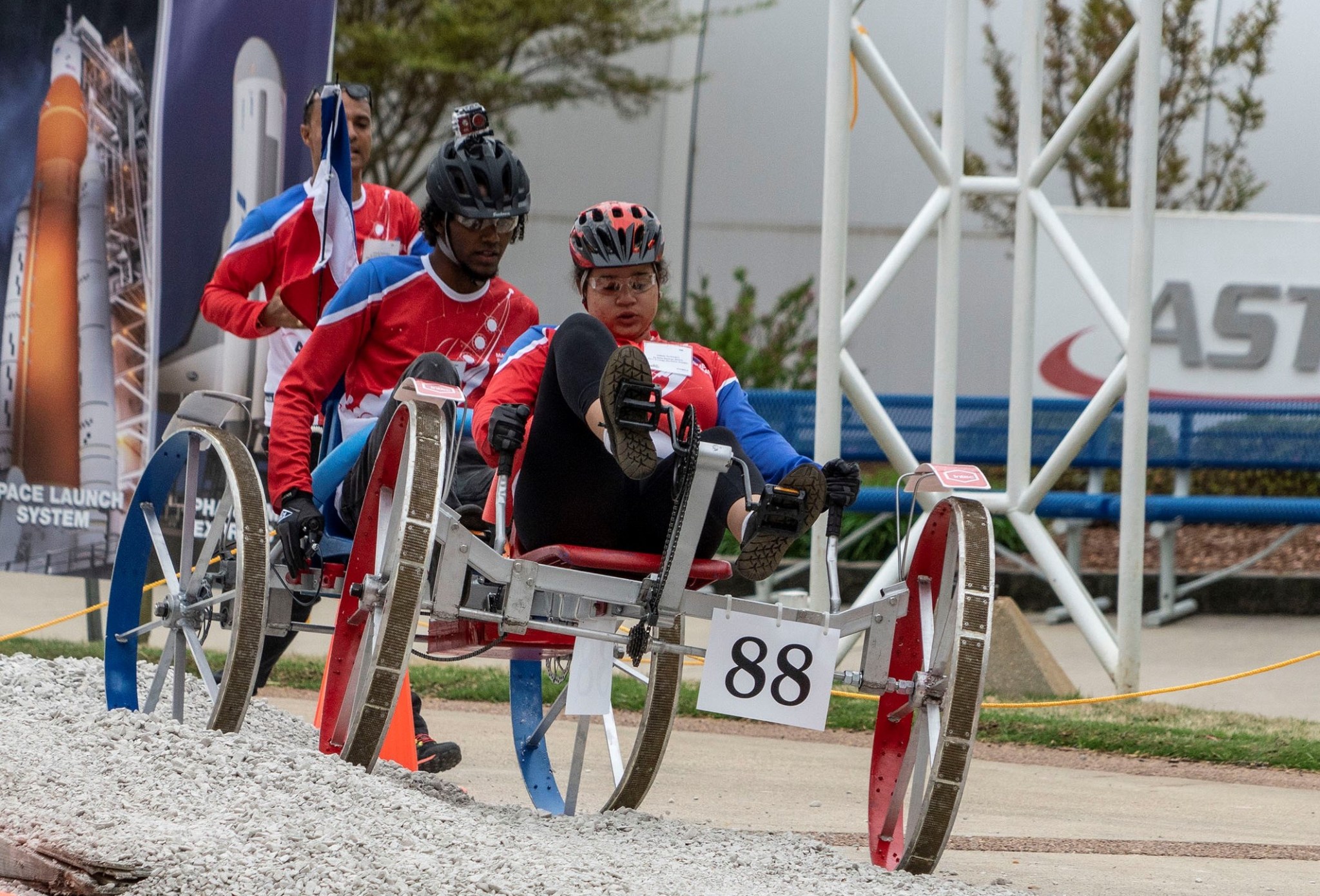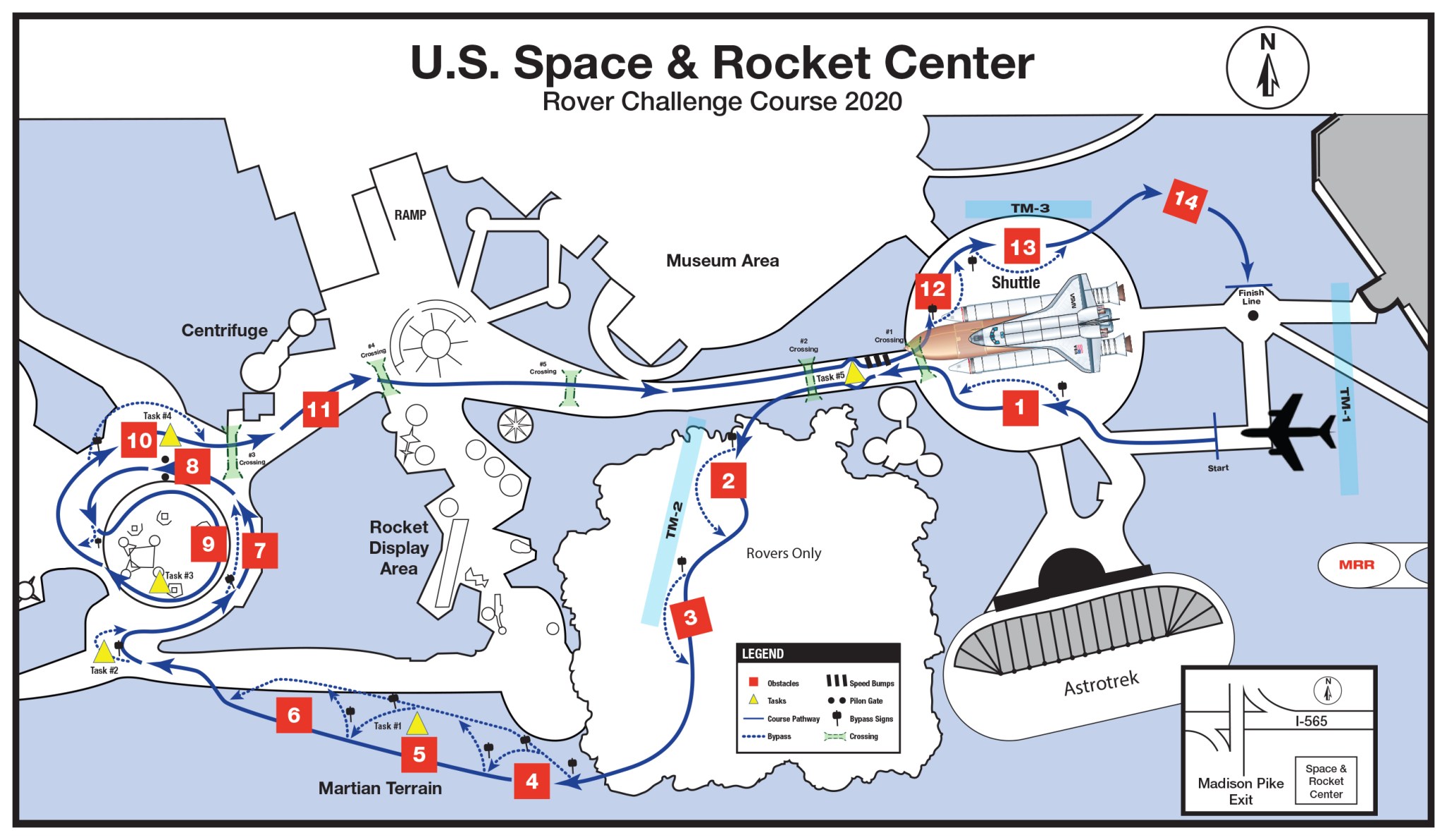Registration has opened for student teams to participate in the 2020 NASA Human Exploration Rover Challenge, set for April 17-18, 2020, at the U.S. Space & Rocket Center in Huntsville, Alabama. Registration for international teams closes Dec. 12; U.S. team registration ends Jan. 16, 2020.

The 26th edition of the annual event, managed by the Office of STEM Engagement at NASA’s Marshall Space Flight Center in Huntsville, features students from high schools, colleges and universities around the world designing, engineering and testing a human-powered rover to take on a course simulating terrain found on the Moon and Mars, as well as other planets, moons and asteroids.
“Rover Challenge is a showcase for members of the Artemis generation, who combine ingenuity with their knowledge of the science, technology, engineering and math fields to tackle the course,” said Julie Clift, an education program specialist at Marshall.
Rover Challenge reflects the goals of NASA’s Artemis Program, which seeks to put the first woman and next man on the Moon by 2024. One female and one male driver will pilot each team’s lightweight rover across the grueling half-mile course featuring obstacles and scientific challenges.
The contest previously focused on finishing the course as quickly as possible. Now, its primary mission is to challenge teams to think like NASA mission planners and planetary explorers. Among the rule changes for the 2020 challenge is the addition of one minute – for a total of eight minutes – to finish the course, which gives teams a greater opportunity to earn points by completing more of the optional 14 obstacles and five science tasks.
The tasks in this year’s competition are:
- Spectrographic Analysis — Take photographs with a camera using different filters.
- Instrument Deployment — Deploy a solar powered cell for a scientific instrument.
- Core Sample Retrieval — Collect a sample consisting of loose rock or mineral grains bound together by a liquid.
- Solid Soil Sample Retrieval — Collect, bag and store solid surface samples.
- Liquid Sample Retrieval — Collect, bag and store three separate liquid samples.
In another major rule change, NASA will no longer accept pneumatic tires or other commercially purchased wheels on any competing vehicle. Each team must design and fabricate their wheels — with the exception of the central hubs. The 2020 Technology Challenge award will focus on wheel design and fabrication. Judging will be evaluated on a written report, oral interview, presentation, wheel inspection and performance of the technical solution during the race.
NASA’s Office of STEM Engagement furthers the agency’s goal of encouraging students to pursue degrees and careers in the STEM fields through multiple challenges, including Rover Challenge.
For questions regarding U.S. and international team registration, please contact MSFC-RoverChallenge@mail.nasa.gov.
For more information about the 2020 Human Exploration Rover Challenge, visit:
https://www.nasa.gov/roverchallenge
For more information about other NASA engineering challenges, visit:



























